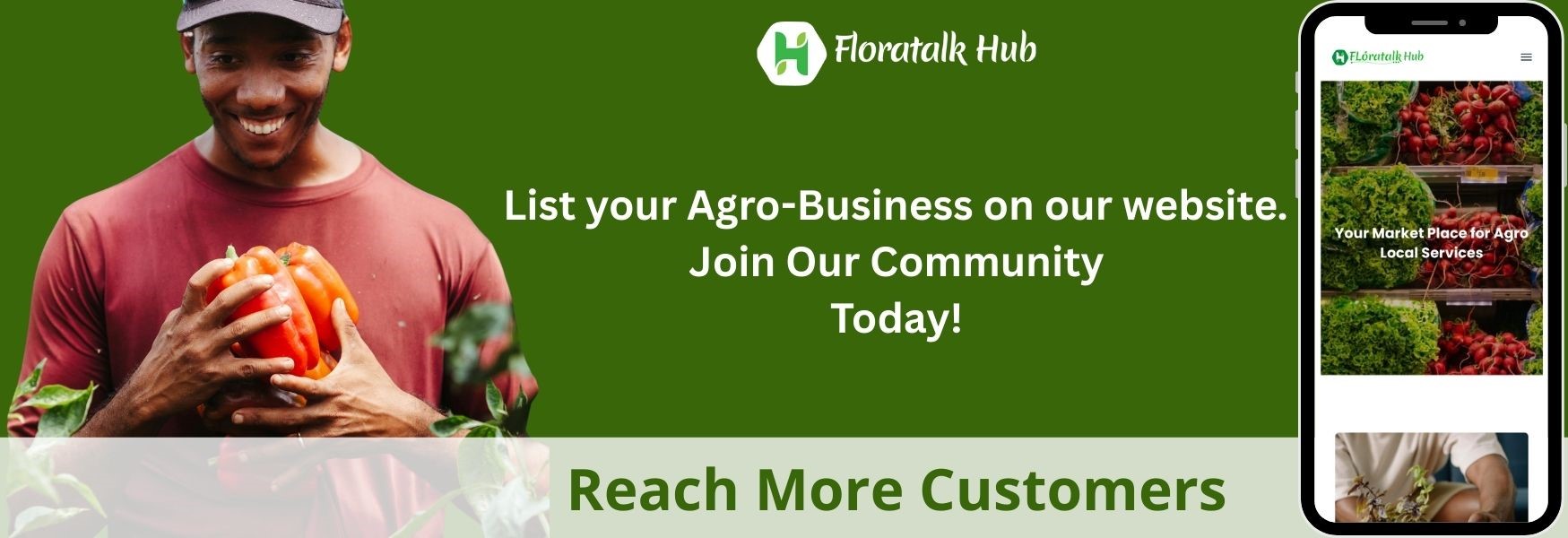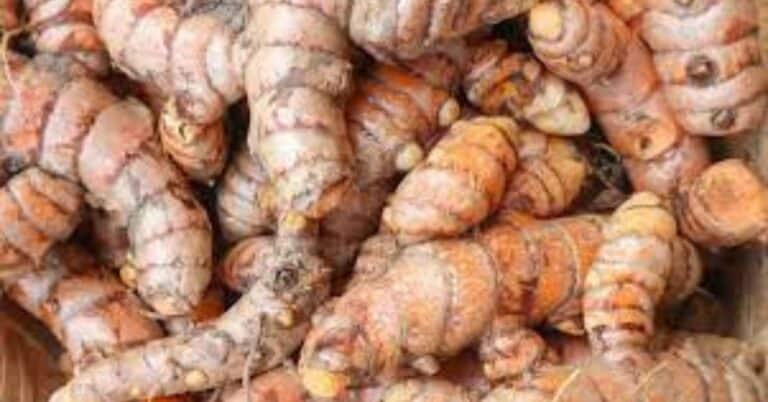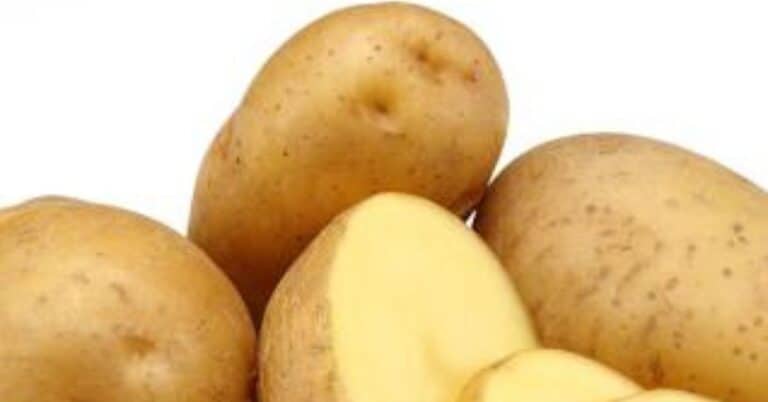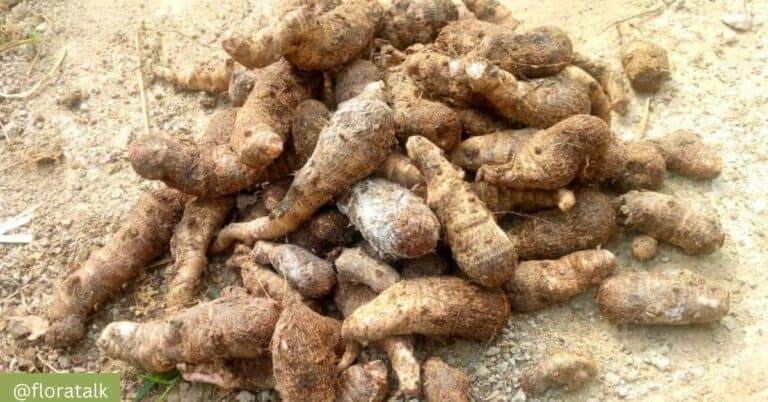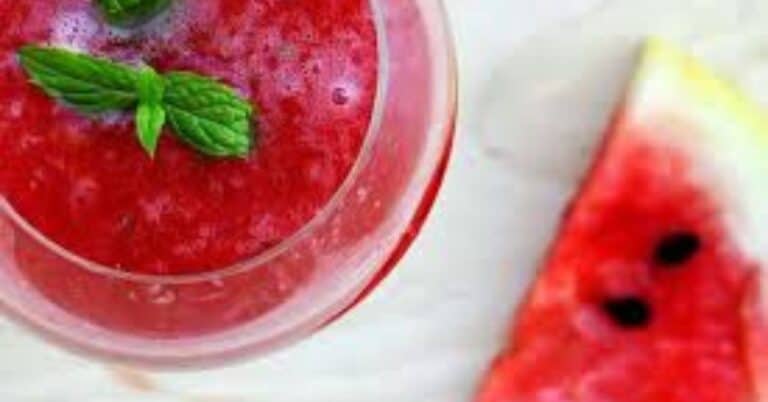Watermelon: Simple Facts, Uses And Benefits To Know
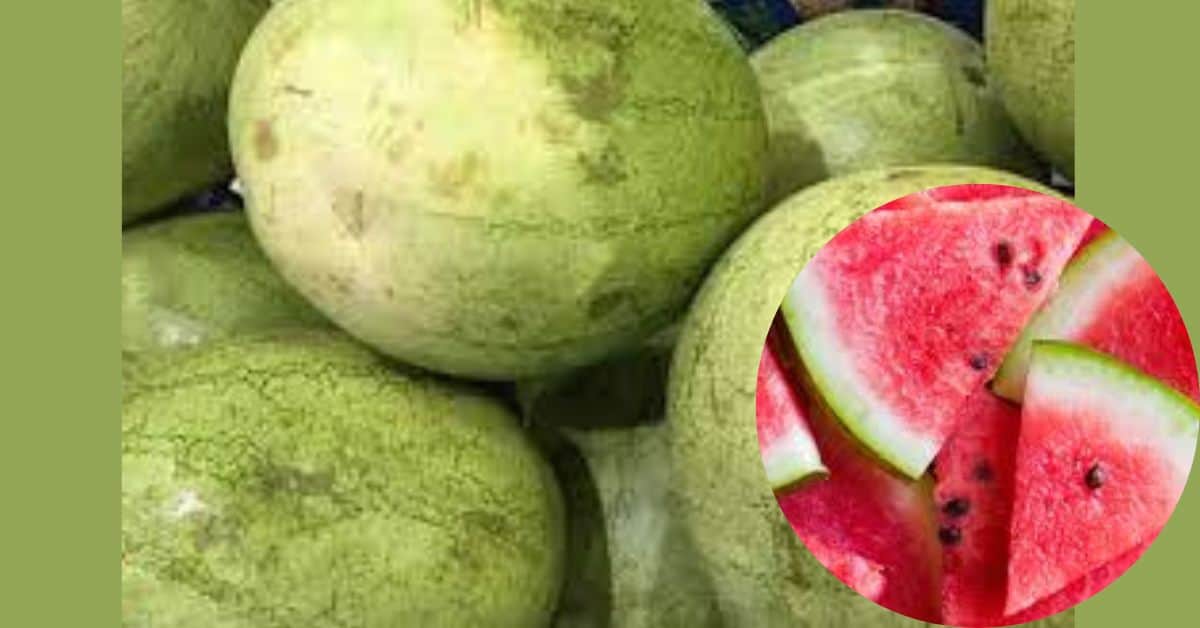
Watermelon is a large fruit with a spherical shape.
Referred to as a special type of botanical berry called Pepo.
Its botanical or scientific name is Citrullus lanatus,
species C. lanatus belongs to the Citrullus genus and to the Cucurbitaceae family of plants,
all watermelons belong to the same family and genus of plants.
It is related to fluted pumpkin (ugu), melon (egusi), pumpkin (Ugbogoro), cucumber and golden melon; they all come from the same Cucurbitaceous family of plants.
Watermelons taste sweet and eaten raw,
they are used in making fruit salad and juice,
the fruit can be blended with other fruit to make juices.
It has the red pigment called Lycopene that gives it the red or pink colour,
this pigment is also found in tomatoes, red grapefruits and guavas.
It is made up of 92% of water and low in calories, rich in vitamins, minerals and has various healing properties for which the flesh or pulp, rind, and the seeds are used.
Watermelons are vine-like plant, they require warm climate to thrive, temperature higher than 25oC (77oF ),
Watermelons are grown in tropical and subtropical areas for its large edible fruit,
In Nigeria, watermelons grow both in the rainforest regions and in the dry Savannah regions,
both regions support successful growing of watermelon and give good yield. Click here to see how to grow watermelon.
In Nigeria watermelon is called Anyụ mmiri in Igbo, Elégédé òyìnbó in Yoruba and in Hausa its called Kankana.
History
Watermelon history tracked back over 4000-5000 years ago to the continent of Africa.
Although the exact location in Africa is much debated and assumed to have been in the Southern or Northern region of the continent of Africa.
Its origin is in the Kalahari Desert of Southern Africa.
The first recorded watermelon harvest occurred nearly 5000 years ago in Egypt Northern Africa and seen in Egyptian hieroglyphic on walls of their ancient buildings.
Watermelons were often placed in the burial tombs of kings to nourish them in the afterlife.
Overtime watermelon became naturalized to other continents and is now cultivated in many counties across the globe.
Today China is the world’s single largest watermelon producer, producing 134,175,909,133 tons
followed by Turkey 8,533,014,779 tons,
India 5,500,526,900 tons
Brazil 5,022,534,419 tons
and Algeria 4,865,300,921 tons. (Source: FAOSTAT, 2019.)
Algeria is the largest producer in Africa and the fifth largest producer in the world
Nutritional Information
Serving size: 1 cup of diced fresh watermelon (152 g) contains:
- Calories: 43
- Fat: 0 g
- Sodium: 2 mg
- Carbohydrate: 11 g
- Sugar: 9 g
- Fibers: 1 g
- Cholesterol: 0%
- Vitamin A: 17%
- Vitamin C: 21%
- Iron: 2%
- Calcium: 1%
- Sodium: 0%
- Potassium: 4%
- Protein: 0.5 g
Watermelons contains Copper, Riboflavin, Niacin, Vitamin B-6, Folate, Manganese, Betaine, Pantothenic Acid, Magnesium, Phosphorus, Zinc, Lycopene, Selenium, Thiamine, and Choline.
Varieties
There are lots of watermelon varieties they differ in:
- Rind Colour: It ranges from pale green to dark green (light green solid, dark green solid, light green dark stripes etc.)
- Size: It varies from 2kg – 15kg
- Taste: The taste of the flesh is more or less sweet
- Shape: Spherical, Oblong Or Elongated
- Thickness of Rind: Between 0.5mm – 3mm
- Seeds Status: Seeded Or Seedless
- Flesh Color: Red, Pink, Orange, Yellow
Some of the common varieties are:
- Sugar Baby
- Crimson Sweet
- Charleston Gray:
- Orangeglo Golden Midget
- Jubilee
- Green Gold
- Ice Box
- Kaolak
- Sweet Beauty
- Sangria
Parts of the Watermelon
Rind
This is far more than a scrap to be thrown in the trash, it’s more versatile than you think and still has a lot of life left in it.
Watermelon rind is the tough outer layer which has a green exterior which fades to pale white inside before the red or pink flesh of the fruit.
Rind is harder and less juicy, the rind possesses a large percentage of nutrients but usually is discarded.
It encompasses low calories and high content of vitamin A, C and B6, potassium, and zinc.
It is loaded with citrulline, chlorophyll, amino-acids, lycopene, phenolic compounds and flavonoids.
Rinds when dried become thin and curled, they become irregular or cylindrical. In southern America the rind can be marinated, pickled or candied
Seed
Watermelon seeds are low in calories and are nutrient dense, they are crispy when roasted and can easily take the place of some unhealthy snacks.
The amount of nutrient you can get from watermelon seed depends on how many you eat,
because they are small you need to eat a good quantity of it to get their considerable benefits.
The seeds can be enjoyed roasted, sprouted or the seed oil used for cooking.
Flesh
White flesh
The white flesh nearest the rind contains more of the amino acid citrulline than the flesh,
it has a crisp texture similar to cucumber,
this white part of the fruit between the pink flesh and the rind, is not only edible but has a good source of nutrients that is totally different from those of the watermelon flesh (red or pink).
It has more fiber and potassium, it contains significant levels of amino acid citrulline.
Red flesh
The flesh is the part of watermelon we are familiar with.
The colour ranges from a deep red to light pink, orange even yellow which is not quite popular.
It contains 92% of water and is an excellent source of hydration.
It contains a plant chemical called lycopene, high amounts of vitamin A, C and B6, potassium.
Watermelon juice, smoothie and puree are produced from the flesh.
How to Select a Good Watermelon
Look the watermelon over for a firm, symmetrical watermelon that is free from bruises, cuts or dent.
Look out for the weight:
watermelon is heavier when it is fully ripe, watermelon will feel heavy for its size.
The water content of a watermelon increases as it ripens, and more ripened watermelons contain 92% of water.
Turn the watermelon over:
The underside of the watermelon should have a creamy yellow spot from where it sat on the ground and ripened in the sun.
If this spot is altogether absent, or if the color is more white than cream colored, you are likely to be looking at a watermelon that was picked a little early in the ripening process.
Pre-cut watermelon
If you are purchasing a pre-cut watermelon sliced into halves or quarters,
choose the flesh that is deepest in color and lacks any white streaking. If the watermelon has seeds, the seeds should also be deep in color, or white.
Health Benefit of Watermelon
The beneficial effects of watermelon comes from the many nutrients, vitamins, minerals, and organic compounds it possess,
these include significant amounts of;
Vitamin A, vitamin C, calcium, magnesium, fiber, protein, potassium, vitamin B6, niacin, thiamin, phytonutrients, Citrulline and lycopene.
The following are a few of the health benefits of Watermelon:
Digestion
Watermelon contains fiber & water which encourages a healthy digestive tract.
Fiber provides bulk for stool, while water helps keep the digestive track moving efficiently,
this helps keep you regular and eliminate constipation.
Good for the Eyes
Lycopene present in watermelon helps keep the eye healthy and protect against age-related macular degeneration (AMD), this is because of its antioxidant and anti-inflammatory properties.
Helps with Hydration
Watermelon is 92% of water, this helps with overall hydration, drinking water is a common way to keep the body hydrated however eating foods with high water content certainly helps.
Watermelon juice is full of good electrolytes which is beneficial to the body.
Promotes a Healthy Heart
High levels of lycopene are very effective at protecting cells from damage and may help lower the risk of heart disease by lowering cholesterol and blood pressure,
It helps prevent oxidative damage to cholesterol.
Watermelon contains Citrulline an amino acid that may increase nitric oxide level in the body, this helps the blood vessel expand, which lowers blood pressure.
Soothes the Skin
Vitamin A & C present in watermelon are important vitamins for the skin.
The A Vitamin helps keep the skin moisturized, it helps to create and repair skin cells. Vitamin C helps encourage healthy growth of collagen.
Muscle Soreness
Drinking watermelon juice before an intense workout helps reduce muscle soreness and heart rate,
Citrulline, an amino acid in watermelon, is responsible for the reduction of muscle soreness.
The fruit juice serves as a recovery beverage after exercise.
Helps with Weight Loss
Watermelon is low in calories and is mostly water. This is beneficial and a good fruit to take when trying to lose weight.
Uses of Watermelon
- Watermelon serves as snacks
- Used in making juice, smoothie and alcoholic beverage
- From the seeds we get cooking oil
- Watermelon rinds serve as vegetable
- Used in making fruit salads
- Used to make puree.
Side Effects
Moderate amount of watermelon presents no serious health risk;
excessive consumption can possibly elevate levels of certain vitamins in the body which may cause complications.
Digestive Problems & Diarrhea
Watermelon helps improve digestive health when taken in moderation, however, taking large quantities may give rise to digestive problems like diarrhea, bloating, flatulence, indigestion, vomiting.
The abundance of Lycopene found in the fruit results to the above problems, this symptom is more among older people because in older people the digestive system tends to weaken with age.
It also contains a sugar compound called Sorbitol which encourages loose stool and gas issues especially with people who are intolerant to Sorbitol.
Cardiovascular Disorder
Watermelon is rich in potassium which when taken in moderation is good for the cardiovascular system.
Taking the fruit in large quantities would lead to an excess of potassium in the body which can lead to cardiovascular disorders like irregular heartbeat, weak pulse rate, cardiac-arrest etc.
It can also affect the motor control and nervous system of the body.
Increase in Glucose Level
Loading up on too much watermelon may increase blood sugar levels in diabetics, the fruit is full of natural sugar, it contains High Glycaemic Index (72).
This can cause a spice on the sugar level of the body.
Diabetics should avoid consuming much watermelon.
Overhydrate
Watermelon known for its high water content and how it helps to stay hydrated.
When taken in large quantity, this can increase the level of water in the body if the body does not excrete excess water it can lead to an increase in the volume of the blood,
this can cause swelling in the legs, exhaustion, and weak kidneys etc.
It can also lead to loss of sodium level in the body.
Taking the fruit in moderate amounts will ensure a healthy and hydrated you.
Bacteria Carriers
Pre-cut melons were recently identified as a possible carrier of salmonella.
So, be cautious while consuming this otherwise healthy fruit,
avoid this contamination by choosing and handling fruit safely to help prevent food borne illness.
Wash hands and food preparation surfaces before and after preparing the fruit.
Refrigerate pre-cut fruit at 5oC (40oF).
Watermelon Facts
- It has more lycopene than raw tomato
- The Carolina Cross is the common variety in Nigeria
- There’s a yellow variety
- They come in over 1200 different varieties
- It is both a fruit and a vegetable
- All parts of a watermelon can is edible, even the rind.
- Over 90 percent of a watermelon is water.
- Guinness World Records says the world’s heaviest watermelon was grown by Lloyd Bright of Arkadelphia, Arkansas, in 2005. It weighed 268.8 lbs. (121.93 kg).
- China is the top producer of watermelon in the world.
- Seedless watermelons developed in 1939 by Japanese scientists who were able to create seedless triploid hybrids which remained rare because they did not have enough disease resistance.
- Seedless watermelons became more popular in the 21st century, rising to 85% of total watermelon sales in the United States in 2014
- In 2007, the Oklahoma State Senate passed a bill in 2007 declaring watermelon as the official state vegetable, with some controversy about whether it is a vegetable or a fruit.
- Farmers of the Zentsuji region of Japan found a way to grow cubic watermelons by growing the fruits in metal and glass boxes and making them assume the shape of the receptacle.
- The cubic shape design is to make the melons easier to stack and store, but the square watermelons are often more than double the price of normal ones.
- There are Pyramid-shaped watermelons.
- Watermelon is a natural Viagra researchers say the fruit is rich in amino acid called Citrulline.
.

